Growing is so much more than height and weight
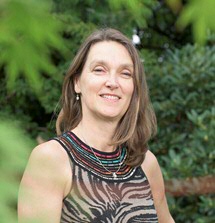
To give good advice at child health care centres and to make effective health policies children’s opportunities need to be taken into account. Not just their height and weight measurements, but also their socio-economic status including financial background, love and care of parents and harmful beliefs. Professor of Child Nutrition and Population Health Hinke Haisma broadened her horizon. She added social and cultural sciences to her life science background. She added new dimensions to ‘growing well’.
Hinke Haisma, working at the Faculty of Spatial Sciences, had her own children in Brazil where she studied the differences in growing between babies from rich and poor families. ‘I received so much help, for example with breastfeeding. The stories from my friends in the Netherlands were completely different. They said that the visits to the child health care centre caused them to worry and made them feel nervous.’
"If a child is not growing well, then this is not necessarily caused by nutritional factors. Often this is caused by stress or financial problems of the parents, or other conditions in which the child is growing up."
A tool for child health care centres
Child health care centres in the Netherlands measure and weigh the child, based on which they give nutritional advice. Then the child is expected to be growing well. ‘The child health care centres in the Netherlands have the right intentions, but quite often cause a lot of concern and uncertainty. It would be great if these child health care centres had a tool to take into account more background information when giving nutrition advice. Perhaps the infant does not need extra nutrition, but the mother might be able to have a rest and work less. Does the mother need help from a grandmother or another kind of care? Are there financial worries? If we solve these underlying problems, then the child will often continue to grow better.’
Making such a tool – that is what drives and motivates Haisma. ‘We compared how child health care centres in the Netherlands, India and Tanzania are dealing with growth curves. How much attention is paid to the context of height and weight measurements? The Netherlands has a very medical focus: Does the child have an illness? If the child is too light, too overweight or too short then it may not have enough growth hormones. We can learn a lot from India: many more questions about the situation at home are asked there when visiting a child health care centre.’
Height and weight: a poor basis
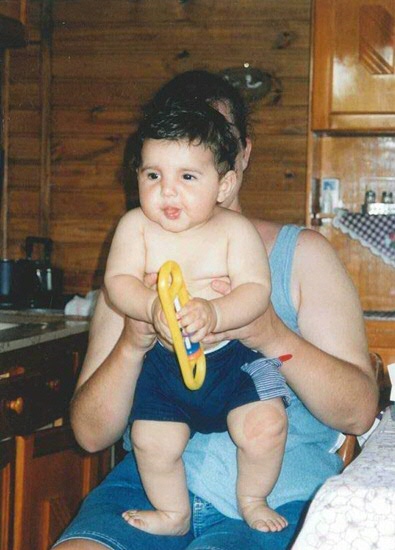
Haisma’s ambition reaches further than child health care centres around the world. Medical data about height and weight are not only a poor basis for giving good advice at child health care centres, but also for developing health policy, for studying the nutritional condition of a population and for comparing how children grow in various countries.
Haisma: ‘I am deeply inspired by Nobel Prize winner Amartya Sen. He showed that the national income (GDP) gives a very limited view of how a country is developing. This is exactly the same as using only height and weight measurements for child development. This gives a much too limited view of the nutritional condition and development of children. The opportunities a child has in life are also of key importance. These opportunities can also be measured; with social and cultural indicators.’
From 2012 to 2019 Haisma coordinated the international project ‘Normative indicators of child health and nutrition - one size fits all?’ funded by the Dutch Research Council (NWO). The researchers worked in Tanzania, India, Bangladesh and the Netherlands to find out all the indicators that can be taken into account as well as height and weight measurements to determine how best to monitor and encourage a child to grow well. In Brazil they also looked at body composition (fat and muscle tissue) to measure being overweight rather than the widely used system of BMI (body mass index).
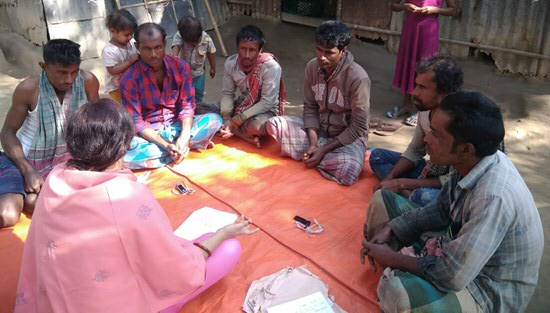
Stress or financial problems
‘If a child is not growing well, then this is not necessarily caused by nutritional factors. Often this is caused by stress or financial problems of the parents, or other conditions in which the child is growing up.’ Take the Brazilian babies, for example, studied by Haisma in the past/ during her PhD research. ‘Eight-month-old babies are heavier when they have rich parents. I discovered that this is because they use less energy. They are lying quietly in their own bed in their own bedroom, while a poor family has to share one room all the time. The baby is handed from one person to the next, from grandmother to uncle or cousin, and doesn’t get as much rest. This child would benefit more from having its own quiet place, rather than being fed more.’
The results of her biomedical life science-oriented research lead Haisma to look at this situation from a social and cultural science perspective. She would like children’s opportunities to be taken into account when monitoring how they grow and develop.
Stigmatised in Tanzania...
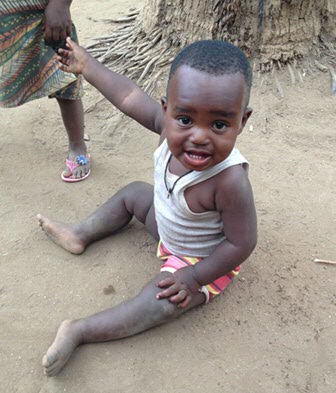
In Tanzania, the poorest country of the four countries in this research programme, it is standard practice to let the child carry a bucket of water on his or her head from a very early age onwards. Mothers give this as a reason if a child is not growing well. Something completely different: mothers are not allowed to have sexual intercourse until two years after the birth of a child. It is said that the sperm would mix with other bodily fluids and with breastmilk. If a child is not growing well, then the mother must be having sex. She is stigmatised. Meanwhile, her husband is allowed to have sex, which increases the occurrence of sexually transmitted diseases. If you know about these kinds of harmful beliefs, then you can contribute to initiating a dialogue with people involved.’
...and also in the ‘rich’ western world
This sure sounds far away, doesn’t it, modern westerner? Well, don’t be mistaken. We also have our own harmful cultural beliefs that can damage families. Rampant consumerism is our standard, and we are all suffering from stress because of this. Haisma: ‘Which highly-educated Dutch woman has the courage to say: “I will give up my job for a while.”? We think that we have freedom of choice, but we would do well to question this.’
It is precisely this freedom of choice that is an important pillar under the model of opportunities that Haisma is aiming for. She is inspired by the capability approach of Nobel Prize winner Sen, mentioned above. It is all about opportunities and capabilities rather than just data such as gross domestic product (GDP) or height and weight measurements without any background or context.
Addressing bottlenecks first
In an ideal world, Haisma would like to see an index that compares countries based on a range of social, cognitive and emotional indicators in addition to height and length measurements. ‘For example, the love and care of parents, the number of friendships, the hours of leisure time and the distance from home to school. In a rating system like this, poor countries might well score higher than rich countries when it comes to children growing up well socially and emotionally.’
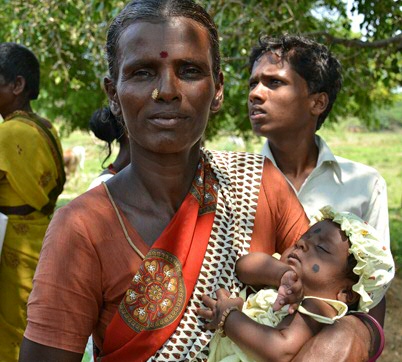
In addition to indicators such as measurable outcomes, limiting factors or bottlenecks also provide an insight into the opportunities for a child to grow and develop. ‘For example, harmful beliefs in a culture, or something very physical. In the floodplains of Bangladesh, for example, a relatively high percentage of mothers do not survive giving birth. This will also limit the child’s opportunities for surviving and growing well. The mother is completely dependent on the father: can he get her to the hospital on time? Does he have access to a boat? Will he realise when it is necessary for them to start making the journey? Quite often, the mothers don’t give clear enough signs.’ Such a bottleneck as this example, is something that you can address first as a country to improve children’s chances. If you also add these bottlenecks to the international index that Haisma is aiming for, then you can really compare countries meaningfully.
International index
To make an international index and implement it everywhere, two important aspects are essential. Apart from the indicators as identified by Haisma that is. Firstly, good and relevant data are needed. ‘The datasets available are often not contextually rich enough. However, the database Young Lives by the University of Oxford is very promising.’ This dataset is based on long-term research into children and young adults in four countries.
The second element that is needed to really look at child development from a broader perspective will only be successful if Haisma’s fellow researchers in nutrition science and parties such as UNICEF and the World Health Organisation fully embrace her views. ‘I could have published my results in journals for social and cultural scientists, but I deliberately did not do so. I want nutritionists to read about this.’ She is in contact with UNICEF, and at the influential International Union for Nutritional Science she manages the task force Towards a multi-dimensional index for child growth. This is the basis of a new, international measuring system.
More information
Prof. Hinke Haisma is Professor of Child Nutrition and Population Health, Rosalind Franklin Fellow and Head of the Department of Demography at the University of Groningen in the Netherlands. She combines nutritional science with social and cultural sciences to provide the necessary background and context for data about how children grow in various parts of the world.
Haisma received a Vidi grant in 2012: her NWO-WOTRO project Normative indicators of child health and nutrition - one size fits all? (2012-2018 and still running) covers four dimensions: (1) monitoring how children grow at child health care centres, (2) effective interventions in populations, (3) an index to be able to compare populations and countries with each other and (4) the conceptual: a model of opportunities, a capability framework to counter the one-dimensional model of children’s weight and height.
Original Dutch article: NWO/Rianne Lindhout. English translation: Christy de Back
More news
-
09 October 2025
Open colleges bij de Faculteit Ruimtelijke Wetenschappen
-
30 September 2025
Politiek zet z'n tanden in de verdeling van schaarse ruimte in Nederland
-
23 September 2025
6e Editie van het Nationaal Ruimtelijk Verkiezingsdebat in Groningen
